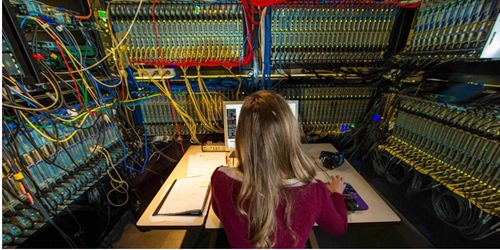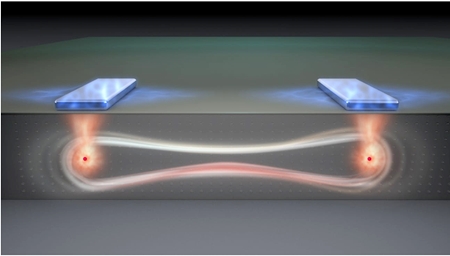|
NOVIDADES
While quantum computing has long been an exciting notion for scientists and the public alike, the realization of these technologists has long been on hold. But researchers from the Johns Hopkins University have discovered a material that might just fast-track the creation of these, until now, mythical machines. The team’s research describes a superconducting material, β-Bi2Pd, that naturally exists in a quantum state without the additional influence of magnetic fields usually needed for such an effect. The authors write that the low-maintenance, stability of this material makes it a perfect candidate for designing quantum systems. The research will be published in the journal Science by physicists from Johns Hopkins University. 
Despite boasts of quantum supremacy by the likes of Google and speculations over the advances such a technology would make in areas from cryptography to pharmaceuticals, the reality of widely available quantum computers has long been stalled by the physical limitations of the technology. Unlike classical computers, which operate using pieces of information called bits that can only represent either a zero or a one at a given time, quantum computers speed up this computational process by instead using something called qubits, which can represent both zero and one simultaneously. In physics, this kind of duality is called superposition. What makes this superconducting material special is the unique state it occupies as its ground state, or when no other forces are being exerted on it. While other superconducting materials can be forced to maintain a quantum state using external magnetic fields or energy-sustaining “quantum spin liquid,” the researchers found that this material naturally exists in a quantum superposition, in which current can simultaneously flow clockwise and counter-clockwise in a ring of the material. This discovery is the realization of a prediction made by physicists in the 80s of something called half-quantum magnetic fluxes (HQFs.)  Qubits, pictured above in an artist's interpretation, can exist simultaneously as both zeros and ones, speeding up a computer's computation power dramatically.
“This makes the flux qubit design much more practical than ever before. This finding would imply revolutionary changes in device design for quantum computer makers who employs flux qubits, or those who have gone down other paths may now find flux qubits more attractive,” Li told Inverse. But that doesn’t mean we’re out of the woods yet when it comes to our halting approach to universal quantum computing. A certain breed of quantum computing, called a topological quantum computer, uses dancing 2-D, quasi-particles called anyons build a braid-like weave in space-time that in turn creates the computer’s logic gates — a piece of cake. In order to determine how their superconducting material would fair under these conditions, Li told Inverse that future research will now focus on looking at the material for the presence of a unique kind of particle, called Majorana fermions, which simultaneously exist as their own anti-particle. “Ultimately, the goal is to find and then manipulate Majorana fermions, which is key to achieving fault-tolerant quantum computing for truly unleashing the power of quantum mechanics,” Li said in the press release. She continued to tell Inverse that while Majorana fermions are currently just theoretically, they show promise to be the path forward in quantum computing. “Presently there are only conception ideas what these M qubits may look like, but no clear blue print how exactly to realize them,” Li told Inverse. “However, the foundation for that to happen is to have the material that can host M fermions. In that regard, our discovery of Bi2Pd being a spin-triplet superconductor, the few candidate of materials that can have M fermions, is very significant for the long run of quantum computing.” As with many scientific advances, this discovery is unlikely to be the single domino that truly jump-starts the age of quantum computing, but it does appear to be a promising step toward finding more sustainable and reproducible solutions to this quantum question. By Tony Melov. Inverse. Accessed: Oct 22, 2019. |
|||||||||||||||||||||||||